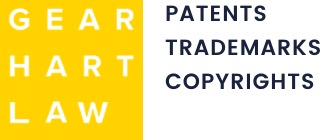Drawings play an important role in patent applications. They provide a clear visual representation of your invention, helping examiners and others understand its features and functionality. When drawings are incomplete, unclear, or fail to meet the required standards, it can lead to delays or even a rejection. Addressing these issues promptly can make a significant difference in the outcome of your application. By ensuring your drawings meet the necessary standards, you can give your invention the best chance of moving forward in the patent process.
What Are “Inadequate Drawings”?
In the world of patents, drawings must clearly and accurately represent your invention. When they fall short of this standard, the U.S. Patent and Trademark Office (USPTO) may issue a rejection labeled as “inadequate drawings.” These rejections occur when the drawings fail to comply with specific rules or do not properly convey the invention’s details.
Common reasons for inadequate drawings include:
- Lack of detail: Missing components or unclear depictions of how the invention works.
- Improper formatting: Not following USPTO guidelines, such as incorrect margins, line thickness, or labeling.
- Inconsistent drawings: Discrepancies between the drawings and the written description.
- Missing views: Omitting necessary perspectives, such as cross-sectional or exploded views, needed to fully explain the invention.
Inadequate drawings can limit the scope of your claims or cause unnecessary delays. Correcting these issues promptly ensures your application remains on track.
Steps to Address a Rejection for Inadequate Drawings
If you’ve received a rejection due to inadequate drawings, don’t worry—it’s a problem that can be resolved. Below are the steps to take to address the issue and strengthen your patent application.
Review the Examiner’s Office Action
Start by carefully reading the Office Action issued by the examiner. This document outlines the specific reasons for the rejection and provides valuable insights into what needs to be fixed. Pay close attention to any deficiencies noted, such as missing views, unclear details, or incorrect formatting. By fully understanding the feedback, you can focus on the areas that require correction and prepare an effective response.
Update or Redraw Using Proper Guidelines
Once you understand the rejection, the next step is to revise the drawings. It’s important to follow USPTO standards, ensuring that line weight, shading, margins, and labeling are correct. Address any missing details or perspectives noted in the examiner’s feedback. Working with an experienced illustrator familiar with patent requirements can help ensure the drawings are compliant. Additionally, make sure the revised drawings are consistent with the written description to avoid further issues.
Submit a Response to the USPTO
After updating the drawings, prepare a formal response to the Office Action. Explain how the revisions address the examiner’s concerns and attach the corrected drawings. Confirm that the updated materials meet all USPTO requirements. Submitting a thorough and well-prepared response will improve your chances of moving the application forward successfully.
Preventing Future Rejections
Preventing rejections due to inadequate drawings begins with preparing your patent application carefully. Start by ensuring your drawings comply with USPTO guidelines, including proper formatting, accurate details, and consistent labeling. Including all necessary views, such as cross-sections or exploded diagrams, helps convey the full scope of your invention. Double-check your drawings for consistency with the written description to avoid discrepancies.
Collaborating with a skilled patent illustrator can ensure your drawings are professionally prepared. By submitting well-organized and complete drawings from the start, you can save time and avoid unnecessary setbacks during the patent application process.
How We Can Help You
At Gearhart Law, we understand the challenges of addressing a rejection for inadequate drawings. Our team has extensive experience in guiding inventors through the patent application process and ensuring compliance with USPTO requirements. We can help you review the examiner’s Office Action, identify the specific issues, and work with professionals to revise your drawings.
Whether it’s ensuring proper formatting, addressing missing details, or aligning the drawings with your written description, we’re here to make the process more manageable. With our support, you can feel confident that your application is on the right track.
Contact Our Experienced New Jersey Patent Attorneys
Addressing inadequate drawings is an important step in securing your patent. By acting quickly and thoroughly, you can overcome rejections and keep your application moving forward. At Gearhart Law, we’re here to assist you. Contact us today to get started on strengthening your patent application.

